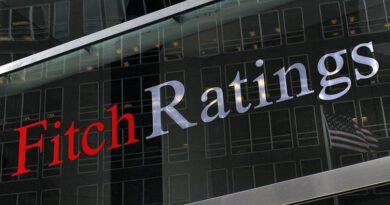GDP growth is great but doesn’t signal a recovery
South Africa may have missed a recession, as gross domestic product (GDP) recovered by 3.1% in the second quarter of 2019, but this does not mean an end to the downward economic cycle.
Statistics SA announced the pleasantly sizeable uptick in economic growth on Tuesday. It follows the sharp decline in the first quarter, when the economy contracted by 3.2%, largely underpinned by electricity outages.
A technical recession occurs when the economy contracts for two consecutive quarters.
Not strong enough
“It is stronger than the market expected but it is not strong enough,” says Economists.co.za founder Mike Schüssler.
Read: Ramaphosa: Economic turnaround requires urgency but will not be quick
The market forecasted an increase of around 2.5% but the economy surpassed this, mainly on the back of the mining and quarrying sector, which increased by 14.4% (up from a decline of 10.8% in the first quarter) to contribute one percentage point to GDP growth.
Next up was the finance, real estate, and business services sector, with a 4.1% increase, followed by the trade, catering and accommodation sector at 3.9%.
“It is a positive thing and shows that there is underlying resilience in the economy, but there is not yet underlying confidence,” says Schüssler. He believes the country is more likely to go back to a growth rate of about 1% in the third quarter.
Underlying economic activity remained weak, with GDP increasing by just 0.9% year on year and only 0.4% in the first six months of 2019, compared with the first half of 2018.
The South African Reserve Bank estimates that the economy will grow by a paltry 0.6% this year.
Nedbank echoes Schüssler’s sentiments, stating in a note that growth in the second half is expected to be modest since there is no evidence that the economy is experiencing “meaningful upward momentum”.
“The economy remains vulnerable to disruptions in electricity supply, adverse turns in the global business cycle, rising domestic cost pressures and fragile confidence,” it says. “Given that most of these factors are likely to persist for some time, growth prospects will probably remain subdued.”
True recovery
Ultimately, says Schüssler, if there is a recovery pattern, most sectors with the exception of agriculture (because “you can’t control the weather”) would have experienced increases, particularly construction and transport.
Instead, the construction industry remained under strain, contracting by 1.6% – its fourth consecutive decline and ninth fall in the last ten quarters.
In a statement, Professor Raymond Parsons from the School of Business and Governance at North-West University, says that in order for government to make the latest growth numbers sustainable it will need to deliver more policy certainty to boost investor confidence and job creation.
With the good comes the bad
While the economy grew in the second quarter, so did unemployment – from 27.6% to 29%.
Last month National Treasury released an economic strategy discussion paper that outlines a number of actionable reforms, meant to reverse the unsustainable growth in joblessness within the next ten years. Should the reforms be implemented successfully, it forecasts economic growth of between two and three percentage points and the creation of one million jobs.
“The growth plan, if broadly supported, could facilitate turning the economy around,” says Parsons. “It is essential now to provide the necessary leadership and to forge sufficient consensus around what needs to be urgently done to strengthen the SA economy.”
Source: moneyweb.co.za



